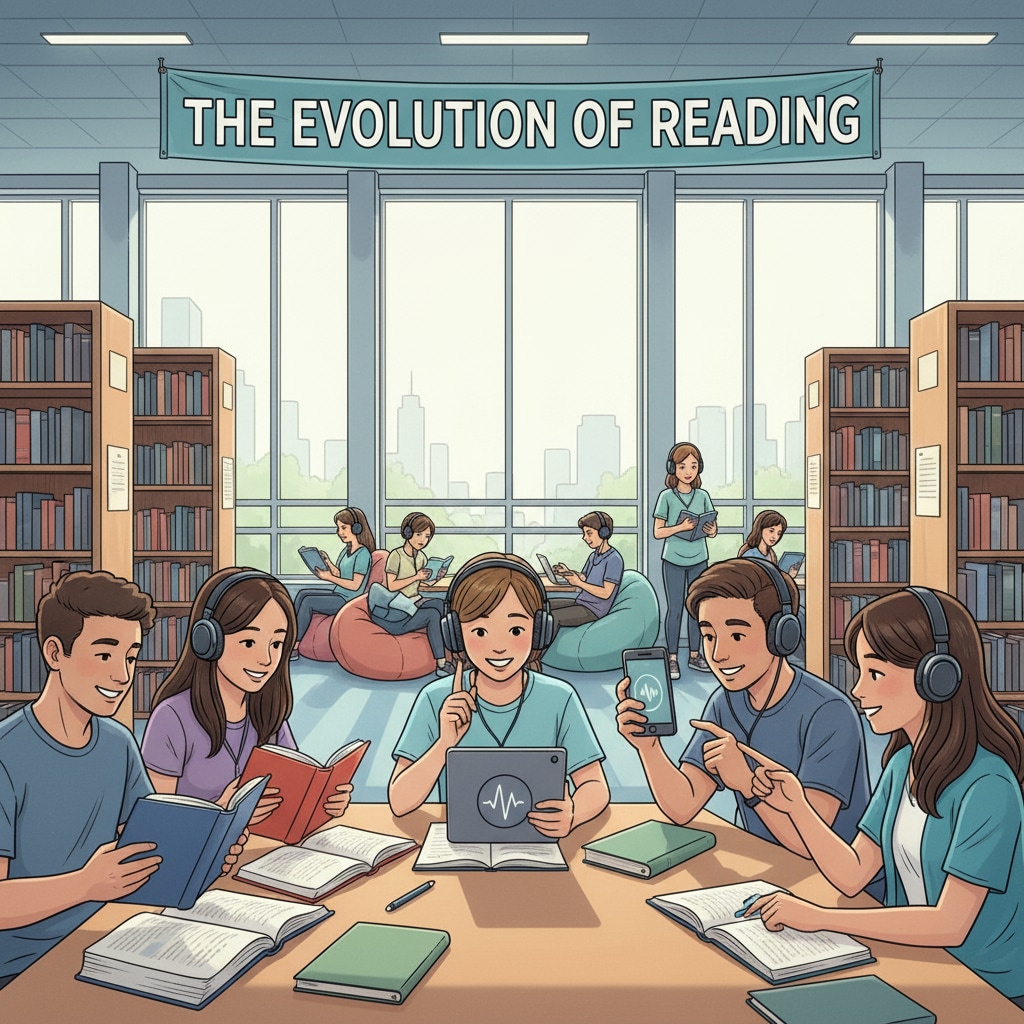In the realm of middle school Chinese language education, the question of whether audiobooks can serve as a suitable alternative to traditional reading has sparked a lively debate. With the advent of digital technology, audiobooks have become increasingly popular, offering a convenient and accessible way to consume written content. However, when it comes to cultivating students’ reading abilities and promoting a deep understanding of the Chinese language, the role of audiobooks needs to be carefully examined.

This article delves into the differences between audiobooks and traditional reading in terms of cognitive development, reading ability cultivation, and educational equity, aiming to provide insights for educators and students alike. Audiobook on Wikipedia Audiobook Definition on Merriam-Webster
The Cognitive Development Aspect
Traditional reading engages multiple cognitive processes. When students read a Chinese text, they visually process the characters, decode their meanings, and construct mental images. This hands-on interaction with the text helps in building a strong neural connection related to language processing. For example, when reading a classical Chinese poem, students need to analyze the structure, rhythm, and imagery, which stimulates their critical thinking. On the other hand, audiobooks rely mainly on auditory processing. While it can enhance listening skills, it may not provide the same level of in-depth cognitive engagement. Therefore, in terms of cognitive development, traditional reading holds a significant advantage.

Reading Ability Cultivation
Reading ability encompasses various skills such as vocabulary acquisition, comprehension, and speed reading. Traditional reading allows students to control the pace, reread difficult passages, and annotate the text. This active engagement is crucial for improving reading skills. In a Chinese language class, students often need to analyze complex sentence structures and understand implicit meanings, which is more effectively achieved through traditional reading. Although audiobooks can expose students to a large amount of language input, they lack the tactile and visual elements that contribute to building strong reading abilities. As a result, educators should not overlook the importance of traditional reading materials in cultivating students’ reading skills.
Readability guidance: By highlighting the differences in cognitive development and reading ability cultivation between audiobooks and traditional reading, it becomes clear that both have their own merits. However, traditional reading remains fundamental in middle school Chinese language education for nurturing students’ core competencies. In the next section, we will explore the aspect of educational equity in relation to audiobooks and traditional reading.
Educational Equity Considerations
From the perspective of educational equity, audiobooks can play a positive role. They provide an accessible option for students with visual impairments or learning difficulties. For instance, a student with dyslexia may find it easier to understand a Chinese text through an audiobook. Additionally, in areas where access to printed materials is limited, audiobooks can bridge the gap. Nevertheless, to ensure equal educational opportunities, a balance must be struck. While audiobooks can supplement learning, traditional reading resources should also be made available to all students. This way, every student can develop a well-rounded set of reading skills.
In conclusion, while audiobooks offer certain advantages in middle school Chinese language education, they cannot fully replace traditional reading. Educators should provide a diverse range of learning resources, including both audiobooks and traditional reading materials. By doing so, students can develop strong reading abilities, enhance their understanding of the Chinese language, and achieve a well-rounded education.

The key is to recognize the unique contributions of each and use them in harmony to support students’ learning journey in Chinese language education.


